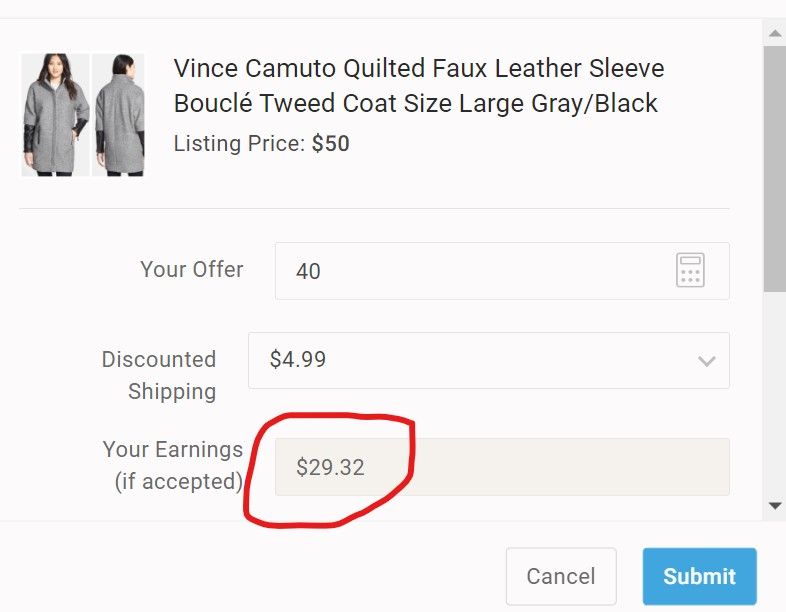Checking Condition of Items While Sourcing for Poshmark (Feat. Euphoria)

Many people consider the "8,000 meter" peaks to be some of the most diffcult to surmount in the world. Everest. K2. Anna Purna.
Resellers know better: Mount DeathPile supercedes all of these.
While oversourcing and underlisting... and photographing... and putting away... is often the source of abundant, er, pile, another oft overlooked contributor to too much stuff is bring home messed up stuff. (That's the technical term, in case you were wondering.)
Messed up stuff is stuff with "issues." Not mommy or daddy related, but more "hole," "faint stain," "how the heck did I miss this stain," "alteration," "other" (more on this in a minute), or "whoops I bought a children's or men's item again"-type issues.

But how do you avoid this? Especially in the dim, dim light of most thrift stores, and in the blinding excitement of having found a BOLO?
Here are a few tips for getting in the right state of mind, checking "hot spots," and bettering your chances of being able to sense problems... presented with Euphoria gifs, because dang this show is wild.
- Gut Check
- Know the Danja Zones
- Be Willing to Embarrass Yourself
- *Allegedly* a Size Large?
- Adopt a Skeptical Mindset
1. Gut Check

Let's start with the simplest of the steps of condition-assessing: the gut check. AKA the "assume this is probably too good to be true" check (see last item for more).
After picking up an item, getting excited (Kate Spade!!), checking out the style (be honest--is this screaming 2007?), and making sure it's not marked up to high heaven ($20 for Madewell jeans? Seriously?), it's time to conduct a gut check of condition. Is this very worn? Is this just... dingy? Does it look or feel really worn out? Is there wash wear, fading, rough texture, thinned spots, tons of pills or snags, or a "sticky" feel, if athletic-wear? Be honest with yourself. It's hard to put back BOLOs that aren't overtly ruined, but beat-to-death items are a surefire way to disappoint buyers.
2. Danja Zones

Armpits. Sleeve cuffs. Seams. The inside of collars. The front center of tops, the mid center (lap) of skirts, and the (sorry) crotch of pants. These are what we consider "danger zones" (or Danja if you are remixing a Britney Spears song or are Archer) in thrifting. That is to say, danger zones are the areas most likely to have been stained, stressed, outright ripped, or otherwise compromised during wear.
To make your own list of spots to check, think about where *you* tend to mess up clothing: where are you sweating? Spilling? Getting lots of wear from friction? Likely to experience hardware malfunction (zippers, grommets, tab closures)? That's where to look on clothing you're considering buying.
Extra credit: checking both the outside and inside of clothing will also save you headaches. Crazy pilling, caked on deodorant, or period stains can be deal-breakers and won't necessarily show from the outside. (Though, hint: a sweater shaver, a wet washcloth, and Grandma's Secret can save the day on these in a pinch--you just want to enter into these situations fully aware of the work required, the risks being taken, and, hopefully, a major discount on the piece).
Lastly: check for seaming that doesn't quite match the rest of the item. Pant legs and skirt hems are chief suspects here. This could indicate alterations to an item that could make it very difficult to sell.
3. Be Willing to Embarrass Yourself

You're not going to want to hear this, but the best way to check for holes is to stick your head in a sweater and rotate it around your face in front of a light source.
This frankly sucks to do in the middle of store, but doesn't suck as much as bringing home cashmere you paid up for with multiple tiny holes you find while photographing.
Other embarrassing but effective methods of inspection include bringing all of your things up to a window to look at them (stains show way better in natural light), and taking your time to look at every single item you have in all its hotspots, including the crotch. Be that person. It's worth it.
4. *Allegedly* a Size Large?

If an item is passing overall condition and flaw checks, it's a good idea to take a look at tags and cross-reference them with the piece. It's easy to bring home an adorable sweater and then realize a women's XXL probably shouldn't have a chest circumference of 30 inches/15 inches across if you're not paying attention. Or, you may discover that size information is missing altogether, and that an item is worth bothering with.
Materials and care tags can help flag potential issues and inform what you should be looking for. For example, you should check extra carefully for holes and shrinking with pieces containing wool, and scan for stains on dyed silk (since it's nearly impossible to stain treat). Matted wool, especially (if not intentionally boiled and labeled as such) is not workable and is a no go. If even extra small items are both tiny and have zero give, step away. [Note: lightly shrunken 100% wool may be salvageable so a visual check as to whether an item is vaguely true to size is probably sufficient. If nothing else, you can always list as "runs small" with measurements. Potentially shrunken mixed media pieces, though, can be risky, so tread carefully with them.]
Lastly, brands with item numbers can help you date items and determine if they're likely to ancient to be desirable, or even make it easy to do a quick comp check. Madewell, J. Crew, Theory, Soft Surroundings, and Athleta are just some of the brands we love for doing this.
5. Adopt a Skeptical Mindset

Perhaps the most important tip of all while sourcing: adopt the mindset of looking for reasons not to come home with an item rather than being hopeful that it's perfect.
While shopping and caught up in the heat of the moment (Outdoor Voices!) remember your existing death pile, and remind yourself of how much it would suck to bring home yet another pair of jeans with a dimpled crotch that you didn't notice until you got home. It will keep your eyes sharp, your standards high, and your cart blissfully light. (Also your credit card balance low. Cash flow is a topic for another post, but always worth considering).
So, it's your turn to reflect: are there flaws that seem to get you every time? (PAIGE jeans and dimpling is a recurring theme for me). Or exotic flaws that you never saw coming? (I once brought home jeans that I only realized during photographing had a completely new waistband sewn in, and a long sweater with a very suspicious, textured brown stain in the interior middle back hem. EW. (*Screams and washes hands forever*).
It's a New Year, so consider this a fresh start for bringing home only the best of the thrift. Death to death piles in 2022!
And if all else fails, just shop like Maddy is judging your picks.

Happy sourcing!
-ClosetWitch
Read More:




